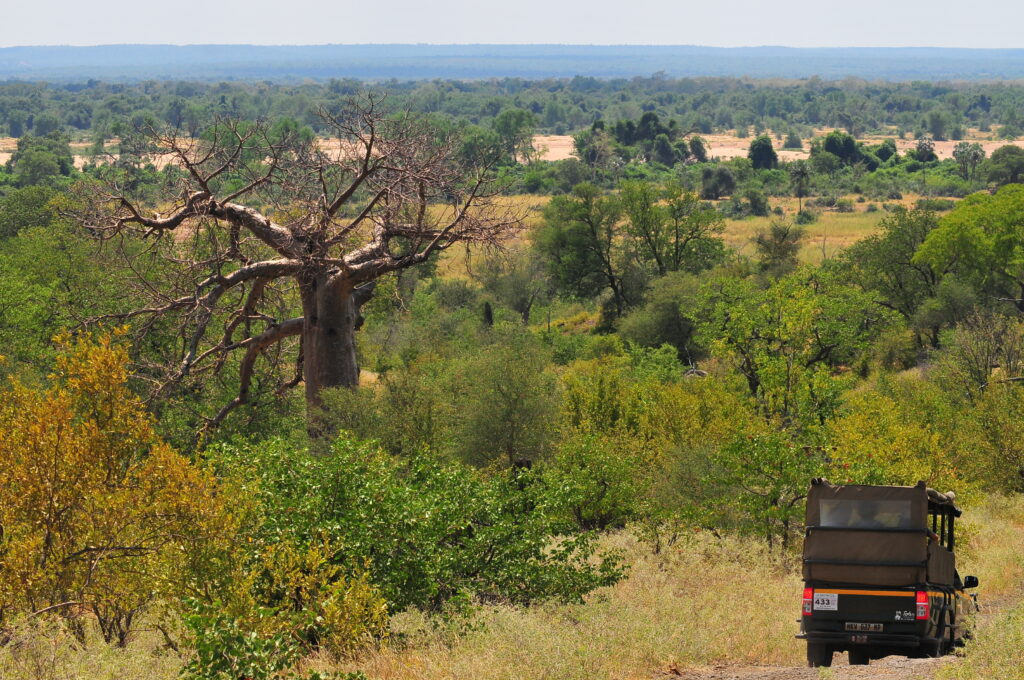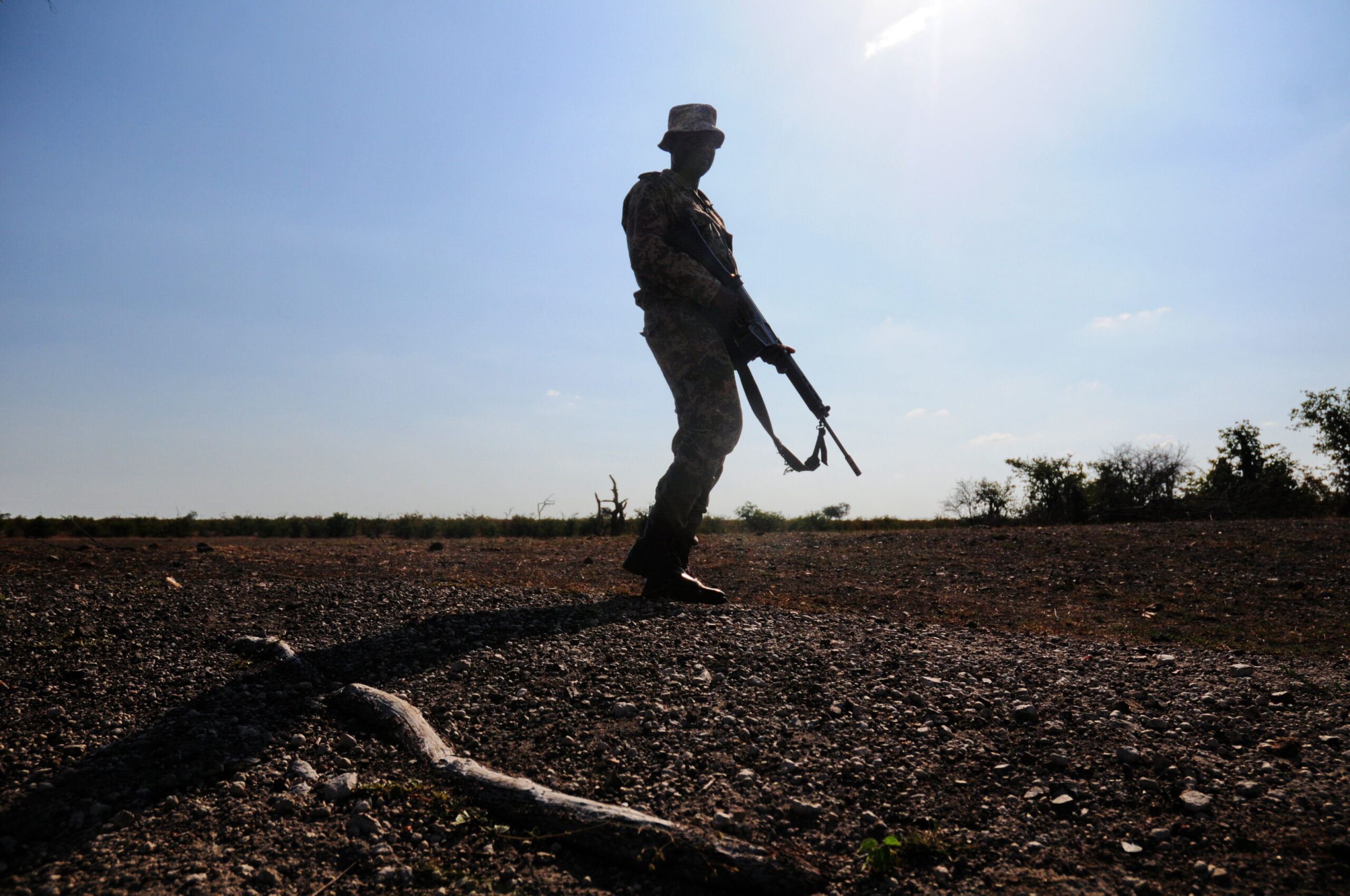Lucas Ledwaba
Poachers are using the highly toxic banned pesticide Aldicarb as a deadly weapon in the devastating war against SA’s wildlife in the Kruger National Park (KNP).
The chemical which was used for pest control in agriculture has been linked to the mass killing of more than 2000 vultures in the park in recent years.
In the latest such incident in the far north eastern part of the park, rangers discovered the carcasses of 86 vultures scattered near the Grootvlei dam which is across the seasonal Hlamvu river under the Mooiplaas Section close to the Mozambique border.
Section ranger Joe Nkuna said they were alerted by the Moholoholo Wildlife Rehabilitation Centre in early March that they had detected that one of their collared vultures was not moving.
Using GPS co-ordinates supplied by the centre near Hoedspruit in Limpopo, Nkuna and a team of KNP rangers managed to track down the bird. But it was too late.

Poachers whose tracks showed they had headed east towards the Lebombo mountain which marks the international border between SA and Mozambique, had set up a snare which entrapped a buffalo.
Nkuna said the poachers then managed to harvest some meat from the animal after which they then poisoned the remains of the carcass.
“Vultures came to clean up. Instead of [the vultures] cleaning up, the [poisoned] carcass cleaned them [up]. When we [rangers] got here there were [dead] vultures all over the place. It was terrible,” said Nkuna during a recent media excursion hosted by the SA National Parks (Sanparks).
A black backed jackal, a hyena, two bateleur eagles and a marabou stork which had also come to scavenge on the buffalo carcass were also killed at the site.
Don English, regional ranger in the Nxianatseni region in the KNP said the pesticide is so deadly that every animal that eats anything laced with it “dies within five minutes.”
A 2021 study by the University of Pretoria noted that “in South Africa, aldicarb is the most potent carbamate pesticide and is sold in the informal markets as Temik.”
The study by Radebe, titled Assessing the carbamate decay kinetics in post-mortem intoxication cases with reference to matrix storage conditions, further revealed that the pesticide is “colloquially known as Two step or Galephirimi [a Setswana word meaning the sun shall never set].”
The poisoning of vultures is not a new phenomenon and was previously linked to the illicit trade in wildlife parts used in the making of charms in the muthi trade. The term muthi is a Nguni word for medicine or herbs.
However, charlatans using human body parts and animal tissue to make charms have created a misleading impression the term muthi refers to the dark side of traditional medicine.
“I have no evidence if they did come to harvest some of the vultures or some parts from the hyena because it was already decomposed,” said Nkuna about whether the recent poisoning could be linked to the illicit trade in wildlife parts.
English said while vulture poisoning is now done for a different reason.
“Vulture poaching started off as muthi poaching, for medicinal purposes. But now it’s not done for muthi. [The] majority of vulture poaching is done to curb detection [of poaching syndicates],” he said.
A 2018 report by USAID titled Wildlife Poisoning in the Greater Limpopo Transfontier Park found that one of the causes of wildlife poisoning is retaliatory poisoning, where local communities use poisoned bait to deal with predators that kill their livestock.
Known as the sanitation brigade of the bush, vultures are renowned for their sharp eyesight which enables them to locate the site of a carcass within a space of time.
“The overhead circling of vultures has long been used to locate dead wildlife. Vultures have been pointing rangers to poached animals, sometimes alerting them to a poaching incident while still in progress,” the USAid report notes.
This unfortunately has made them targets for poachers. The birds travel vast distances even from other provinces away from the KNP to feed and breed. This means the poisoning of the birds in the KNP doesn’t only affect populations there but for most of the SADC region.
“Poison poaching is more devastating. Poison poaching is indiscriminate, [it kills everything] from insects to the biggest predators,” English said.

In November 2013 the Department of Agriculture, Forestry and Fisheries published a notice prohibiting the acquisition, import, export, possession, sale, use and disposal of agricultural remedies which contained several products including aldicarb, aldrin, azinphos-ethyl, binapacry and 14 other products.
In the notice 1116 of 2013, the department noted that Bayer Crop Science the company that sold Aldicarb “has voluntary [sic] agreed to cease all sales and distribution of active ingredient, Aldicarb by end of 2011.”
It also noted that the company had also “agreed to collect and dispose all redundant or unwanted stocks of Aldicarb” and warned that “the illegal use of aldicarb has previously been associated with severe poisoning on dogs and human beings in South Africa.”
Despite the prohibition of the deadly pesticides including aldicarb, it is still easily available from informal traders.
In the Polokwane CBD in Limpopo vendors at the Indian Centre taxi rank sell it in plastic sachets for as little as R30. And although exposure to it is highly toxic, it is packaged in plastic sachets which are easy to break.
The pesticide has also been used in the poisoning of dogs by criminals and has also been cited in suicide cases. In July 2021 Basetsana Moshoeshoe wa ha Makhabane launched a petition on change.org after her sister committed suicide by allegedly ingesting aldicarb.
The use of this pesticide has not only impacted vultures but has also almost decimated the lion population in the Punda Maria area. English said the bones of poisoned predators are harvested by syndicates and sent to the East [Asia] as part of the illicit trade in wildlife.
The northern part of the KNP borders Mozambique in the east, Zimbabwe to the north and SA rural areas to the west.
“We’re getting hit from three sides,” lamented English.
According to the SA National Parks (Sanparks) annual report for 2022/23 poaching decreased by 49,74% in the KNP where 98 rhinos were lost, as opposed to the 195 in 2021/22.
The report notes however that there was an increase in elephant poaching with the KNP losing 32 elephants in the 2022/23 financial year against the nine poached during 2021/22.

“Rangers reported 856 poacher activities, down from 1 262 in the previous fiscal year. In response, 24 arrests were made and 15 firearms recovered, down from 58 and 31respectively in 2021/22,” the report noted.
In addition, 3350 snares were removed from the park in 2023 and 230 animals were killed through snare poaching. The report reveals an interesting factor, that “the increase in elephant poaching in Kruger National Park is driven largely by bushmeat, rather than ivory, demand.”
“If we want wildlife to thrive, we need to give it value,” argued Richard Sowry, section ranger in the Pafuri region.
He argued that communities bordering the park, many of them plagued by high levels of poverty, unemployment and general lack of economic opportunities need to be shown the value of wildlife in order for them to value and protect it.
“If they do not derive any benefit or see the value of helping to conserve the wildlife around them they will use it for their own benefit, which is largely for food. Parks also need to build relations and mutually beneficial partnerships with local communities,” said Sowry.
If this doesn’t happen then challenges such as the poisoning of animals will continue unabated leading to the decimation of whole species.
“They might recover if we stop the poisoning. But if we don’t and if this carries on, in the next five years you won’t be seeing vultures,” warned English. – news@mukurukuru.co.za
